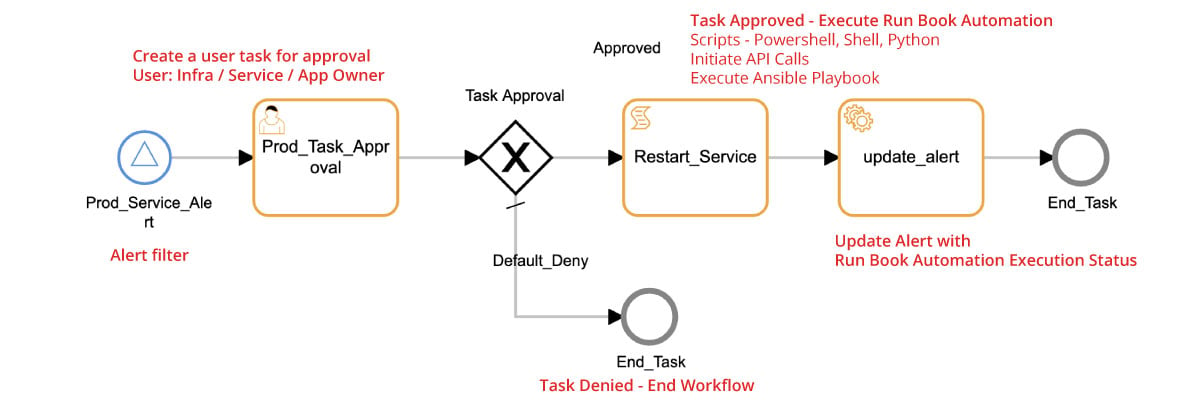IT automation is growing in adoption this year as IT organizations grapple with constantly changing priorities, the pressure of supporting large remote workforces and tight resources. However, IT teams are hesitant to deploy automation workflows on production infrastructure that supports important business applications and services. Trust is an issue – but errors do occur.
Unsupervised automation can sometimes create more problems by missing the actual context for issue resolution.
IT may use change management processes to ensure automation processes have the right levels of human oversight. However, such ITIL-based change approval mechanisms can delay resolution and response time to frustrated users and customers.
To avoid service disruptions while complying with their clunky change management processes, IT managers will resort to scaling up infrastructure to avoid service disruptions. But then you have the expensive problem of over-provisioning (and underutilization) of technology infrastructure. There must be a balance between human oversight and agility on the automation front.
Supervised Automation in OpsRamp
The OpsRamp process automation engine allows IT teams to build and run automation scripts for a wide range of operational scenarios, including mundane tasks such as server reboots and remediation of frequently occurring issues.
The Fall 2020 Release introduces human interaction for process automation--an important step in advancing user adoption of modern IT operations management platforms.
With process definitions, you can orchestrate an automation workflow with manager approvals and specific tasks assigned to different team members before a workflow can trigger. Technology operators can build these process definitions and maintain a knowledge-base for their daily operational activities within OpsRamp.
 Create a series of automated actions with the right approvals to attain a business goal
Create a series of automated actions with the right approvals to attain a business goal
Here are some use cases that you can address with process definitions in place:
- Approve runbook automation before it triggers on a device.
- Based on the output of runbook automation, create a task for users.
- Create an alert to notify teams about an automation failure.
- Execute a script on multiple resources and capture output through emails.
- Send an email to different users when a specific alert is generated.
- Execute outbound API requests based on a specific alert or a particular date.
- Trigger Ansible playbooks for increasing infrastructure capacity.
- Create an auto-incident in OpsRamp for a specific set of alerts.
- Trigger email notifications with a specific format for a group of users.
- After agent installation, trigger an email, execute a remote task, or create an alert within OpsRamp.
OpsRamp’s workflow automation lets you address a wide variety of activities using predefined jobs, such as updating the antivirus software, checking on missing patches, backing up network configuration files, or scanning a set of applications. Process definitions in automation workflows ensure sequential transition between each task along with human oversight and accountability.






